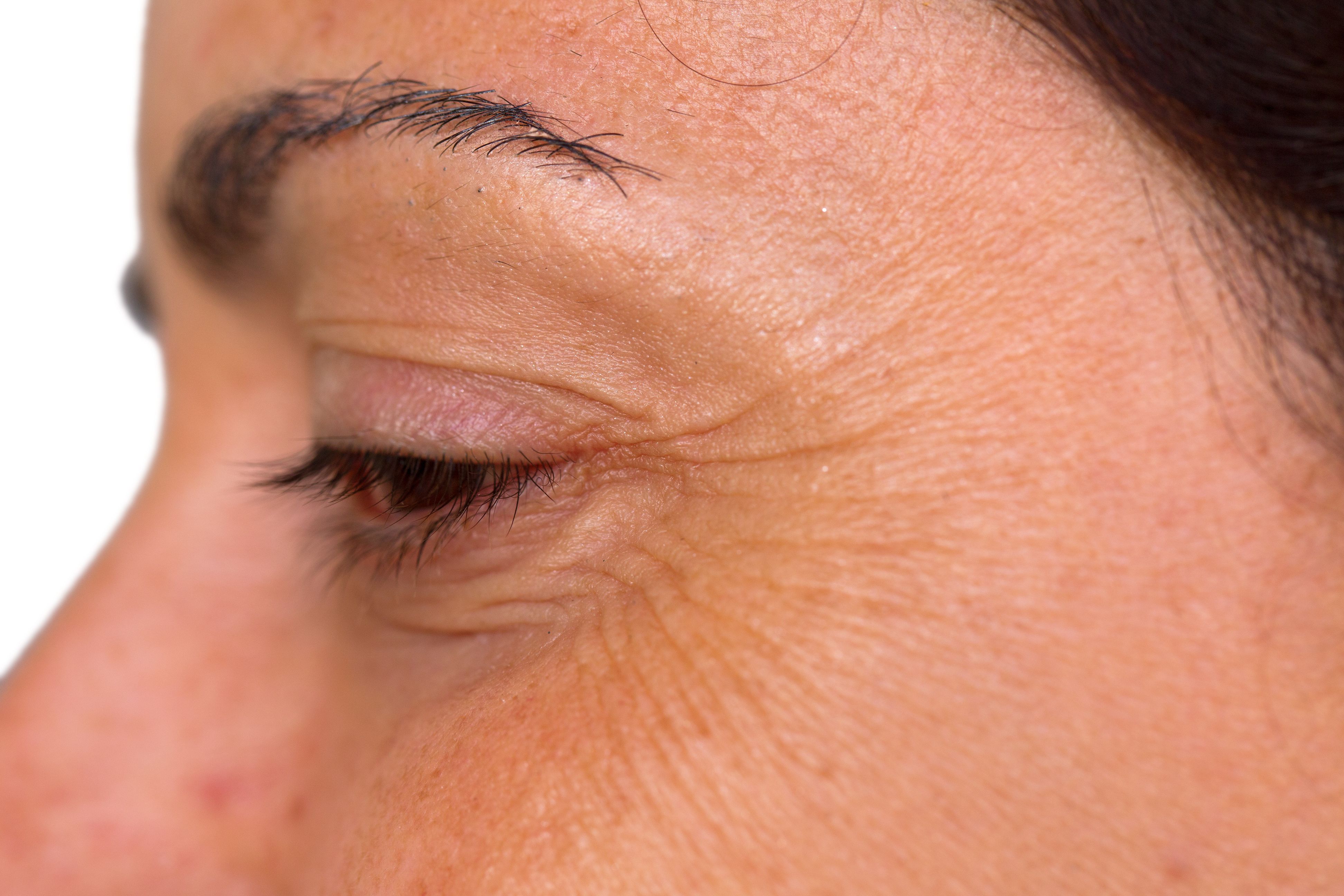- Acne
- Actinic Keratosis
- Aesthetics
- Alopecia
- Atopic Dermatitis
- Buy-and-Bill
- COVID-19
- Case-Based Roundtable
- Chronic Hand Eczema
- Chronic Spontaneous Urticaria
- Drug Watch
- Eczema
- General Dermatology
- Hidradenitis Suppurativa
- Melasma
- NP and PA
- Pediatric Dermatology
- Pigmentary Disorders
- Practice Management
- Precision Medicine and Biologics
- Prurigo Nodularis
- Psoriasis
- Psoriatic Arthritis
- Rare Disease
- Rosacea
- Skin Cancer
- Vitiligo
- Wound Care
News
Article
Changing Skin Microbiome, Signs of Aging Linked in New Study
Author(s):
The skin’s microbiome becomes more diverse with age, and this diversity correlates with crow’s feet lines, according to new research.
F.C.G./AdobeStock

Skin microbiota diversity increases with age, and researchers have found a correlation between this increased diversity and facial signs of aging, specifically lateral canthal lines.
The research, which was funded by L’Oréal USA and performed at the University of California San Diego’s Center for Microbiome Innovation (CMI), was published January 11 in the journal Frontiers in Aging.
The skin’s microbiome changes with age, and in fact, wrote the study authors, “skin microbial composition has been shown to be more predictive of chronological age in adults than oral or gut microbial composition.”
“Skin aging is characterized by a change in immune function and a decrease in sweat and sebum secretions, thus resulting in significant alterations in skin surface physiology including an increase in pH and alteration of the lipid composition,” they wrote. “These physiological changes, in turn, may likely affect the skin microbiome.”
Study Methodology
To determine how these changes affected visible signs of facial skin aging, the researchers performed a multi-study analysis of 13 microbiome datasets, which contained 16S rRNA amplicon sequence data and corresponding facial skin clinical data.
The data were obtained from 650 women between the ages of 18 and 70 who did not smoke, had not received antibiotics or systemic antifungals in the past month, did not have acute cutaneous disorders, and had not used depigmenting, whitening, or exfoliating products in the past month.
These participants were asked to wash their face with a provided neutral soap without anti-bacterial compounds at least 1 day prior to sampling.
Shampoo and soap were applied 48 hours and 24 hours, respectively, before sampling. No other products were allowed on the face until sampling was performed.
Microbiota sampling was conducted by rubbing cotton-tipped swabs firmly on the cheek for 60 seconds to cover a surface area of 2 cm2. Skin quality was determined by grade of crow’s feet wrinkles, hydration, and transepidermal water loss.
Findings
The researchers found that microbial diversity was higher in older subjects than in younger ones, and they found a positive association between this diversity and lateral canthal lines.
Notably, they also observed that microbial diversity tended to decrease with decreasing skin barrier function, as measured by increasing transepidermal water loss.
"One might expect people to have more transepidermal water loss as they age, and studies, including ours, show that skin microbiome diversity increases with age. So the expectation might be that diversity should also increase with increasing transepidermal water loss,” corresponding author Se Jin Song, director of research at the UC San Diego CMI, told Dermatology Times.
“However, several studies indicate that transepidermal water loss is actually stable or decreases with age,” she said. “This was the case in our multi-study analysis as well, where age didn't show a significant relationship with transepidermal water loss.
“A negative relationship between diversity and transepidermal water loss may be an indication that increased diversity in the skin microbiome may be playing a role in increased barrier function, but more research is needed to validate this finding."
Research on the association of the skin’s microbiome and skin aging is ongoing. The researchers concluded, “our study adds to this nascent, but growing body of knowledge aiming to better understand the implications of the microbiome in skin aging, by identifying the changes associated with signs of skin aging, rather than chronological aging alone. It sets the path for new studies to further characterize and validate new microbiome biomarkers of skin aging signs.”
Reference
Myers T, Bouslimani A, Huang S, et al. A multi-study analysis enables identification of potential microbial features associated with skin aging signs. Front. Aging. Accessed January 11, 2024.https://doi.org/10.3389/fragi.2023.1304705
Newsletter
Like what you’re reading? Subscribe to Dermatology Times for weekly updates on therapies, innovations, and real-world practice tips.














